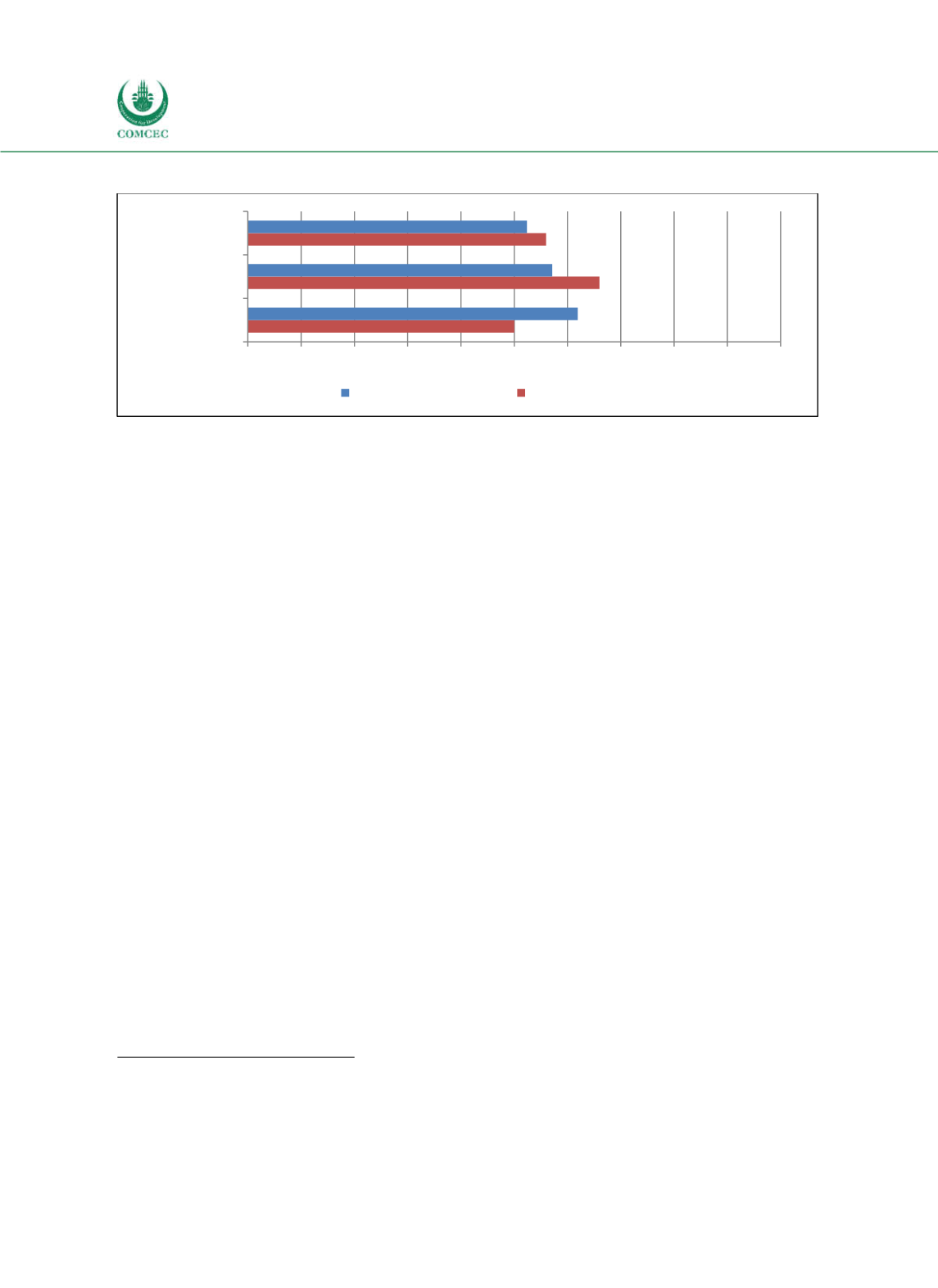

Improving Public Debt Management
In the OIC Member Countries
58
Figure 3-14: Use of Strategic Targets by Type of Risk
Note: 21 observations. Sources: Ifo Public Debt Management Survey (2016), public debt management strategies,
Cabral (2015).
3.3
Islamic Finance in Public Debt Management
3.3.1
Islamic Finance
Islamic finance has become an important part of the financial system in several OIC countries.
Broadly speaking, Islamic finance is based on sharia rules (see also Table G02 in the
Glossary). An important difference between Islamic finance and conventional finance is the
avoidance of interest based finance instruments. The Islamic finance system relies on
partnership and risk sharing, which means that the purchaser of an Islamic bond participates
in the profits or losses of the underlying asset (principle of profitandlosssharing). Profits
and losses are connected to real economic activities and economic risks (Lewis and Alagoud
2001). As returns on investment should be derived from proprietary risk taking, not from
purely financial risks, Islamic finance promotes real economic activity (Song and Oosthuizen
2014).
11
Between 2000 and 2015, the amount of global assets of Islamic finance increased by more than
the twentyfold (see Figure 315). The global financial crisis starting in 2007 only slightly
moderated the growth of Islamic finance assets. The majority of Islamic finance institutions
remained relatively immune to the negative effects of the financial crisis (Baele et al. 2014, OIC
2012, Song and Oosthuizen 2014). Islamic banks did not own significant amounts of subprime
and other toxic assets (COMCEC 2016a, World Bank 2012).
In 2015, global assets of Islamic finance are estimated to total $1.88 trillion (compared to
about $1.81 trillion in 2014). The breakdown of Islamic finance assets in 2015 is as follows:
$1,497 billion for banking assets, $291 billion for outstanding
sukuk
(meant as a broad
category for Islamic finance bonds), $71 billion for Islamic fund’s assets and $23 billion for
takaful
(meant as a broad category for Islamic finance insurance). The relatively moderate
increase of Islamic finance assets in 2015 was caused by exchange rate depreciations in large
Islamic finance markets, the withdrawal of a major issuer of
sukuk
bonds, namely the Central
11
Besides the prohibition of any kind of interest, Islamic finance is bound to
shariah
approved activities. Investment in
certain areas, for example drugs or gambling, is forbidden. Social justice and the sanctity of contracts are important
principles, too (Song and Oosthuizen 2014). Ambiguous contracts, for example, are not allowed under Islamic principles
in order to prevent excessive uncertainty in contracts, to increase transparency and to prevent defraud (Mohieldin
2012).
0% 10% 20% 30% 40% 50% 60% 70% 80% 90% 100%
Currency risk
Refinancing risk
Interest rate risk
OIC Member Countries
Worldwide
















